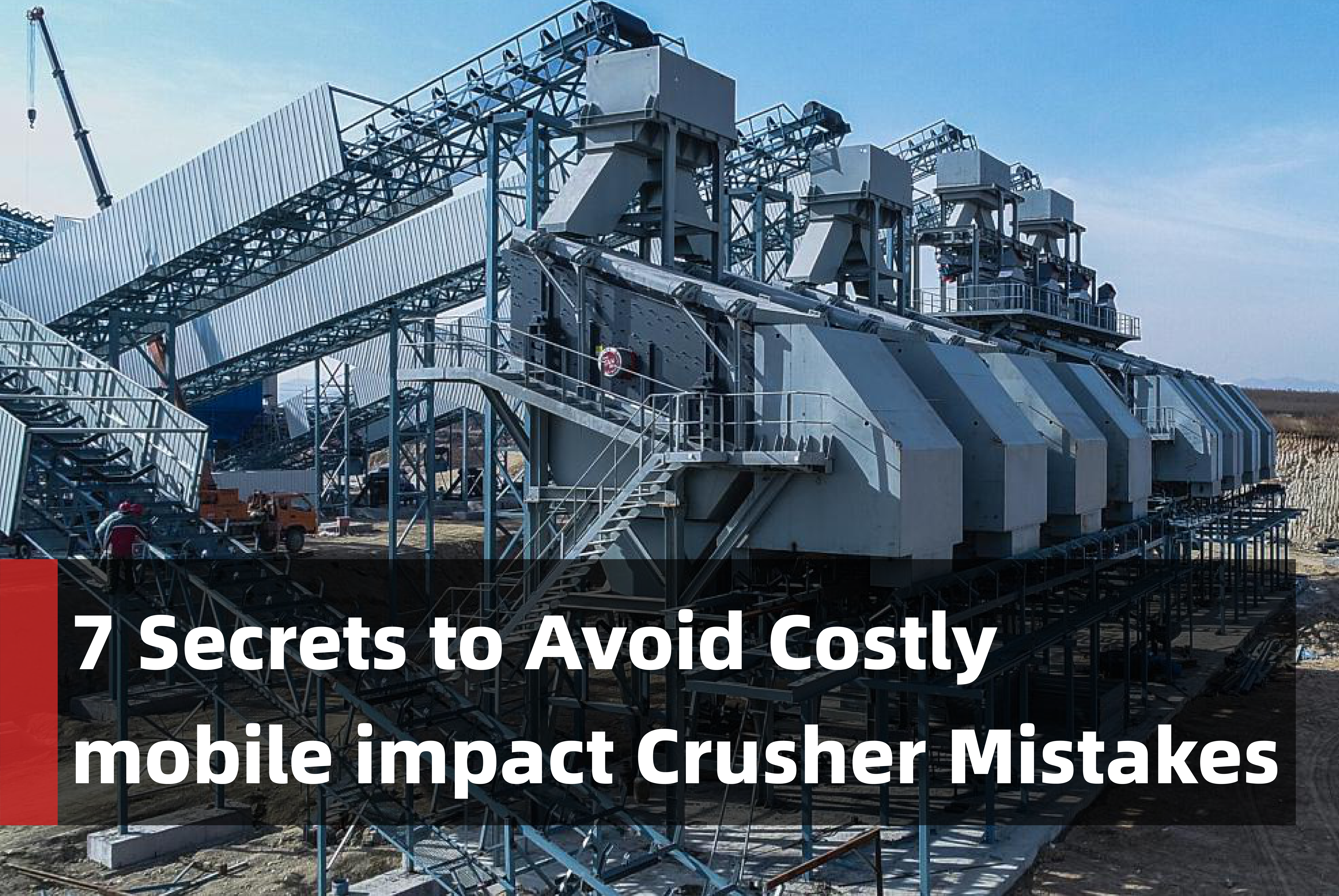
Investing in a mobile impact crusher is a pivotal decision for businesses in construction, mining, and recycling. These machines are not just tools—they are the backbone of operational efficiency. To ensure a wise investment, here are seven essential considerations, presented in clear, actionable terms, designed to guide you through the complexities of selecting the right equipment.
The advertised "tons per hour" metric is often based on ideal conditions, which rarely match real-world scenarios. True performance hinges on material characteristics such as hardness, abrasiveness, and moisture content. For instance, a crusher rated for 300 tons per hour on soft limestone may achieve only 60% of that capacity when processing granite or reinforced concrete.
To avoid surprises, demand material-specific testing reports from suppliers. Reputable manufacturers adhere to ISO 21873-1, the global standard for mobile crusher performance evaluation. Insist on a live demonstration using samples of your typical feedstock—whether it’s demolition debris, quarry rock, or asphalt. This step is non-negotiable, as variations in material properties can drastically alter output and wear rates.
A crusher’s longevity depends on the quality of its core components. The rotor, bearings, and hydraulic systems endure extreme stress and must be built to last. High-end models utilize forged steel rotors with precision-balanced designs to minimize vibration, paired with industrial-grade bearings from brands like SKF or Timken. These components typically operate reliably for 10,000–15,000 hours under normal conditions.
Warranty terms are a litmus test for supplier confidence. Prioritize machines offering at least two years of comprehensive coverage, including labor and travel costs for repairs. Scrutinize maintenance records from existing clients—well-maintained blow bars should withstand 500–1,200 hours of crushing hard stone before replacement. Avoid suppliers who downplay wear part costs; inferior components can double long-term expenses.
True value lies in a crusher’s ability to adapt. Track-mounted units excel on steep, uneven terrain, while wheeled models prioritize rapid relocation between urban sites. Key features to demand include:
Operators frequently overlook the importance of quick-change screen setups and modular conveyor systems, which minimize downtime when switching between material types. A machine that requires hours of reconfiguration between jobs erodes profitability.
Even robust equipment eventually fails. A supplier’s support network can mean the difference between a minor delay and a catastrophic project halt. Leading manufacturers guarantee 24–72-hour onsite response times and provide loaner units during extended repairs. Verify the availability of local service hubs and spare parts inventories—global suppliers often stock critical components regionally, while smaller vendors may rely on slow international shipping.
A fragmented support network risks prolonged downtime. For example, a quarry reliant on third-party technicians might wait weeks for specialized parts, whereas direct manufacturer support ensures rapid resolution.
The purchase price is merely the entry fee. Calculate the lifetime cost per ton by factoring:
Resale value: Established brands like Sandvik or Metso retain 60–70% of their value after five years, whereas lesser-known brands depreciate rapidly.
A detailed cost analysis might reveal that a 600,000 crusher with lower fuel consumption and extended part life outperforms a 450,000 model with hidden operational costs.
Modern regulations impose strict limits on emissions, noise, and dust. Ensure the crusher complies with EU Stage V or U.S. Tier 4 Final standards for diesel engines. Integrated features like automatic dust suppression systems and noise-reduction enclosures are critical for urban projects, where violations can trigger fines or work stoppages.
For example, noise levels exceeding 75 decibels may breach local ordinances, while uncontrolled dust emissions risk health violations and community backlash. Always request certified test reports for emissions and sound levels.
A supplier’s reputation is your safeguard against subpar equipment and service. Demand contact information for three recent clients who purchased the same model. Probe these references with specific questions:
Cross-reference feedback with independent sources like industry forums or trade associations. A supplier unwilling to provide references likely has something to hide.
IoT integration: Real-time monitoring of wear parts, throughput, and engine health via cloud platforms.
Modular design: Allows upgrades to meet future emission standards or automation trends.
Alternative fuel readiness: Compatibility with biodiesel or hydrogen engines prepares you for shifting regulations.
Early adopters of AI-driven crushers report 10–15% efficiency gains through dynamic adjustments to rotor speed and feed rates.
A Strategic Approach to Selection
Purchasing a mobile impact crusher demands a holistic evaluation. Focus on:
By prioritizing these factors, you secure not just a machine, but a competitive edge in efficiency and reliability.